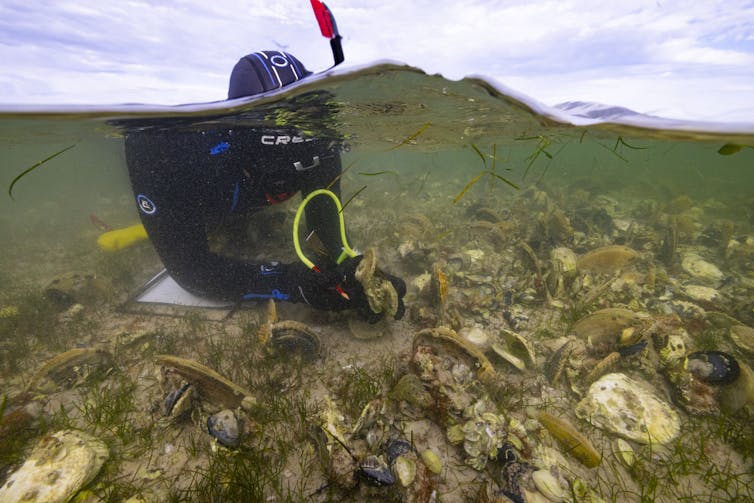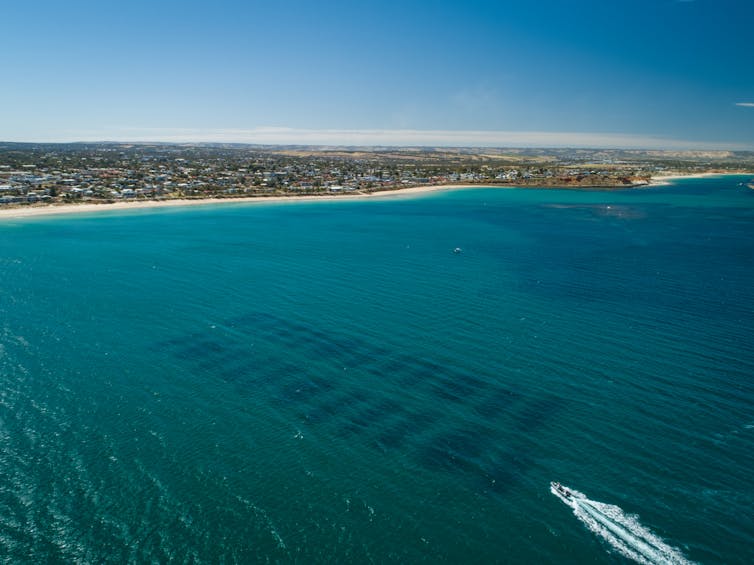Source: Radio New Zealand
David Seymour, Chris Bishop and Christopher Luxon at the announcement of New Zealand’s new planning system. RNZ / Mark Papalii
The coalition’s RMA reforms seem far more likely to stand the test of time than what Labour passed shortly before being voted out.
Four government ministers fronted to announce the Resource Management Act replacements to more than 100 reporters, stakeholders commentators and officials at the Beehive on Tuesday afternoon.
They include a Planning Bill and a Natural Environment Bill the government will send to select committee next week, with the aim of passing by the end of next year, presumably before the election.
Given the consultation processes needed, the proximity to that election may echo Labour’s effort in 2023 which was quickly scrapped by the incoming coalition.
But indications from the opposition are that the merry-go-round of RMA reform will finally come to an end.
Labour won’t repeal – Hipkins
Labour leader Chris Hipkins. RNZ / Mark Papalii
Labour leader Chris Hipkins said the party was still working through the detail of the roughly 750 pages of legislation, particularly the regulatory relief aspects.
“That is the bit that we’re going to want to get into the detail of, because that could be very, very difficult for future governments, for future lawmaking, in the public interest,” he said.
“If you have to be compensating for every sort of infringement on somebody’s unfettered right to do whatever they want with their property, that has potentially far-reaching implications.”
But he indicated Labour would not return the coalition’s favour and again repeal and replace the legislation – opting instead to make changes.
“I think the repeal and replace cycle needs to end. That doesn’t mean that there won’t be amendments but the old idea of constantly going back and starting all over again has to stop.
Green Party co-leader Marama Davidson. RNZ / Samuel Rillstone
“From what I can see there’s a heck of a lot of similarities between what they’re proposing now, and the law that they repealed.”
The Green Party said whatever went through had to protect the environment, community voice, democratic processes and the Treaty.
“This government has shown time and time again that they will pass laws that further erode our environment and our living systems, our habitats and species,” co-leader Marama Davidson said.
RNZ has sought comment from Te Pāti Māori.
Certainty amid ‘tsunami of change’ – councils
Local Government New Zealand was happy to have certainty, saying there would be buy-in from councils and communities alike.
Vice President Rehette Stoltz, who is also Gisborne’s mayor. RNZ / Angus Dreaver
Vice President Rehette Stoltz, who is also Gisborne’s mayor, said she saw an increased workload ahead, it would also be an opportunity for more engagement with central government which had signalled it was open to.
“I think local government is seeing a tsunami of change, but we’re ready for that. We want to serve our communities as best as possible. Yes, there will be more work on local mayors. There will be more work also with local communities, because we will have to lean in, and our communities have to lean in to let us know what’s important to them at that local level.”
LGNZ’s regional sector chair Deon Swiggs, who is also chair of Environment Canterbury, said it was an opportunity to think differently about resource management.
He said the coalition’s version was “straight out” simpler than Labour’s, and he hoped the government would use the expertise of regional councils.
“Regional councils have some really, really good people who know this work [like the] back of their hand. And we do have elected members who have been elected to regional councils who were elected because they wanted to be in the resource management space,” he said.
“How we harness the skillsets of those people into this transition framework as well is going to be critical. So we want to be making sure that we have conversations with the government so that we don’t lose that technical skill, that institutional knowledge.”
Local Government New Zealand’s regional sector chair Deon Swiggs. RNZ / Nate McKinnon
Farmers, property professionals, Taxpayers Union back ‘ambitious’ reforms
Federated Farmers said the Resource Management Act had been the single biggest handbrake on growing agricultural productivity and rural economies.
Its resource management spokesperson Mark Hooper said it made sense to use certified Farm Plans instead of needing a resource consent.
“Farm Plans can achieve much of the same environmental outcomes as a resource consent, without the need to fork out tens of thousands of dollars on expensive planners and lawyers.”
However, Hooper said the increase in fines and restrictions on the use of insurance to cover a breach did not strike the balance in the right direction.
“This needs to have more nuance so that when harm is done accidentally, for example an effluent system fails due to poor engineering, this is recognised in the regime.”
The New Zealand Planning Institute said the timeframes for transition to the new system were “ambitious”, but supported the legislation.
“There are plenty of positives in the new system, with a refocus on the value planners bring to society,” NZPI Board Chair Andrea Harris said.
“We’ve been advocating for strategic spatial planning, which considers the long-term needs of society and coordinates the provision of infrastructure and growth within constraints.”
The Taxpayers’ Union said scrapping the Resource Management Act would be “the most meaningful tax relief offered by this government or any government in decades.”
Environmental groups rail against ‘regulatory relief’ effects
Greenpeace said companies being able to claim compensation was an “outrageous” idea, and it “flips the entire principle that polluters should pay on its head.”
Environmental Defence Society chair Gary Taylor. Supplied
Spokesperson Gen Toop said New Zealanders should not be expected to pay compensation to companies causing environmental harm.
“In practice, this means that if regions like Gisborne want stronger rules to stop forestry slash destroying homes and rivers, ratepayers would likely be forced to pay offshore forestry companies ‘compensation’. It’s absurd.”
The Environmental Defence Society also expressed concern at the regulatory relief proposal.
“That will have a chilling effect on councils protecting things. If they protect something, then arguably they have to pay the landowner for that, which is really bizarre and I think is a construct that comes out of right wing ideology,” EDS chair Gary Taylor said.
“Councils will have rate caps, so they won’t be able to afford to pay, so they’ll have weaker controls.”
Forest and Bird general counsel Erika Toleman said putting greater weight on private property rights would ignore harms like destruction of biodiversity on private land, erosion of soils and ecosystem services, and cumulative degradation of rivers and landscapes.
“Big environmental issues, from deforestation to water pollution, happen within property boundaries. Excluding these effects is a recipe for decline,” she said.
Toleman said introducing compensation would make councils fear liability for protecting nature.
Ministers sell the policy
Prime Minister Christopher Luxon. RNZ / Mark Papalii
Announcing the new regime, Prime Minister Christopher Luxon said it would be a “more permissive, consistent and predictable system, that unlocks investment, reduces delays and gives businesses confidence to plan and to grow”.
He said officials estimated up to 46 percent of consenting and permit applications required under the RMA could be removed – between 15,000 and 22,000 consents that would no longer be needed based on 2023/24 figures.
Luxon was flanked by Deputy Prime Minister David Seymour, RMA Reform Minister Chris Bishop and Associate RMA Reform Minister Simon Court.
Seymour said it was “an historic and momentous day” because it marked a shift to the principle that “if you own a property and you’re not harming anyone else, you can”.
“We have the best piece of land on the planet but we’ve made it too hard to build an affordable life here, but worst of all we’ve done it to ourselves with planning laws that allowed every Tom, Dick and Henare to say no when people had an idea to make life better.
“It seems that for every person in this country who think they can, there’s a ‘can’t’, who’s empowered by the Resource Management Act to get in the way.”
Bishop said it would mean “less paperwork, less cost, faster and easier progress for those who want to do basic things like putting a deck on a house, building a fence on a farm, or constructing townhouses or even a wind farm”.
“The size of the prize is substantial. The economic opportunities we unlock with these reforms are unbelievably large,” he said.
He said economic growth would begin as soon as the system was set up and would build up over time, unlocking billions in economic value.
“Once this is implemented new Zealanders will be able to go to one website, look at one map, and figure out what they can and can’t do with their property – and in time they may be able to obtain simple consents online within a matter of days by harnessing the power of AI.”
He said councils would no longer be involved in gauging demand or financial viability of projects, retail distribution effects, the negative effects of development on competition.
“Which way your front door faces is an important decision, but guess what, it’s an important decision for you and your family, not for a local council bureaucrat to decide for you.”
Court said the major shift was towards a system with property rights at its centre, “after all, property rights are a core cornerstone of a liberal democracy”.
“Providing for regulatory relief is a critical way to right-size regulation by forcing councils to confront the real cost of these restrictions on private property that for too long have been costless to that council officer holding the highlighter, colouring in people’s property.
“It’s also a way to ensure that when these controls are justified, the property owner can access reasonable relief.”
He said the planning tribunal set to adjudicate when there was disagreement, will hold councils’ feet to the fire.
Prime Minister Christopher Luxon says the system will be a “more permissive, consistent and predictable system”. RNZ / Mark Papalii
Bishop acknowledged the new regime had some similarities to Labour’s approach, but said he would “stand absolutely behind the decision” to repeal that law in favour of his own version.
“We started again for a reason and I think we’ve ended up with a with a good outcome. Yeah, I absolutely think that was the right thing to do.”
The third coalition partner New Zealand First did not have a speaker at the announcement, but deputy leader Shane Jones said Māori involvement in the rollout would be key.
“Let’s see how the bill comes out of the Select Committee. But, you know, unless we have development in our Māori rural communities, they’re going to be in strugglers gully,” he said.
“But there’ll be people who disagree, because obviously the debate is ongoing as to how much veto power should Ngāi Tahu, for example, have over the development of the South Island.”
Sign up for Ngā Pitopito Kōrero, a daily newsletter curated by our editors and delivered straight to your inbox every weekday.
– Published by EveningReport.nz and AsiaPacificReport.nz, see: MIL OSI in partnership with Radio New Zealand














